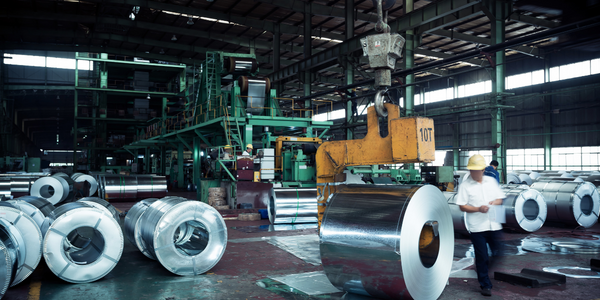Technology Category
- Analytics & Modeling - Digital Twin / Simulation
- Infrastructure as a Service (IaaS) - Virtual Private Cloud
Applicable Industries
- Life Sciences
- Metals
Applicable Functions
- Product Research & Development
Use Cases
- Virtual Prototyping & Product Testing
- Virtual Reality
Services
- Hardware Design & Engineering Services
- Testing & Certification
About The Customer
Nemag BV is a manufacturer of grabs designed for handling a range of bulk materials from coal and iron ore to grain, animal feed, scrap metal, minerals, and biomass. They collaborated with the group of Dr. Dingena Schott at Delft University of Technology (TU Delft) to develop a new generation of grabs for iron ore that are faster and lighter. They used Altair EDEM™ bulk material simulation software to test and optimize the new design.
The Challenge
Nemag BV, a manufacturer of grabs for handling bulk materials, faced a challenge in developing a new generation of grabs for iron ore that were faster and lighter. The traditional process of developing grabs involved building physical prototypes, which was expensive, time-consuming, and limiting. It was difficult to predict the performance of a new design, especially the interaction between the bulk material and the grab, which heavily influences the performance. The traditional methods were not sufficient to understand what happens inside the grab. Therefore, a virtual prototyping approach was developed at TU Delft to model iron ore pellets in interaction with grabs.
The Solution
TU Delft used Altair EDEM™ bulk material simulation software to perform virtual testing of a grab design and predict its performance. They developed a coupling to use EDEM Discrete Element Method with multibody dynamics simulation software, which allowed them to model iron ore pellets and a crane in a virtual environment. Extensive model calibration procedures were developed to account for material structure interaction. This approach effectively captured both material behavior and grab behavior. The co-simulation was validated with measurements on an industrial scale at Tata Steel IJmuiden in the Netherlands. The coupled simulation was then used in the innovative design process, providing key insight into the dynamics of the grab together with the iron ore.
Operational Impact
Quantitative Benefit

Case Study missing?
Start adding your own!
Register with your work email and create a new case study profile for your business.
Related Case Studies.

Case Study
Goldcorp: Internet of Things Enables the Mine of the Future
Goldcorp is committed to responsible mining practices and maintaining maximum safety for its workers. At the same time, the firm is constantly exploring ways to improve the efficiency of its operations, extend the life of its assets, and control costs. Goldcorp needed technology that can maximize production efficiency by tracking all mining operations, keep employees safe with remote operations and monitoring of hazardous work areas and control production costs through better asset and site management.

Case Study
KSP Steel Decentralized Control Room
While on-site in Pavlodar, Kazakhstan, the DAQRI team of Business Development and Solutions Architecture personnel worked closely with KSP Steel’s production leadership to understand the steel production process, operational challenges, and worker pain points.

Case Study
Bluescope Steel on Path to Digitally Transform Operations and IT
Increasing competition and fluctuations in the construction market prompted BlueScope Steel to look toward digital transformation of its four businesses, including modern core applications and IT infrastructure. BlueScope needed to modernize its infrastructure and adopt new technologies to improve operations and supply chain efficiency while maintaining and updating an aging application portfolio.

Case Study
RobotStudio Case Study: Benteler Automobiltechnik
Benteler has a small pipe business area for which they produce fuel lines and coolant lines made of aluminum for Porsche and other car manufacturers. One of the problems in production was that when Benteler added new products, production had too much downtime.

Case Study
Continuous Casting Machines in a Steel Factory
With a very broad range of applications, steel is an important material and has been developed into the most extensive alloy in the engineering world. Since delivering high quality is absolutely crucial for steel plants, ensuring maximum productivity and the best quality production are the keys to competitiveness in the steel industry. Additionally, working conditions in steel factories are not suitable for workers to stay in for long periods of time, so manufactures usually adopt various machines to complete the steel production processes. However, the precision of these machines is often overestimated and the lack of flexibility also makes supervisors unable to adjust operating procedures. A renowned steel factory in Asia planned to improve its Distributed Control System (DCS) of furnaces as well as addressing the problem of insufficient accuracy. However, most well-known international equipment suppliers can not provide a satisfactory solution and local maintenance because the project needed new technologies to more accurately control equipment operations. By implementing Advantech’s automated monitoring and control solution, steel factories can not only improve the manufacturing processes but can also allow users to add additional functions to the existing system so as to make sure the operation runs at high efficiency.

Case Study
Automated Predicitive Analytics For Steel/Metals Industry
Asset to be monitored: Wire Compactor that produces Steel RebarCustomer Faced The Following Challenges:Dependent upon machine uptime.Pressure cylinders within the compactor fail to control compression and speed causing problems in binding the coil.Equipment failure occurs in the final stage of production causing the entire line to stop, can you say bottleneck?Critical asset unequipped with sensors to produce data.



